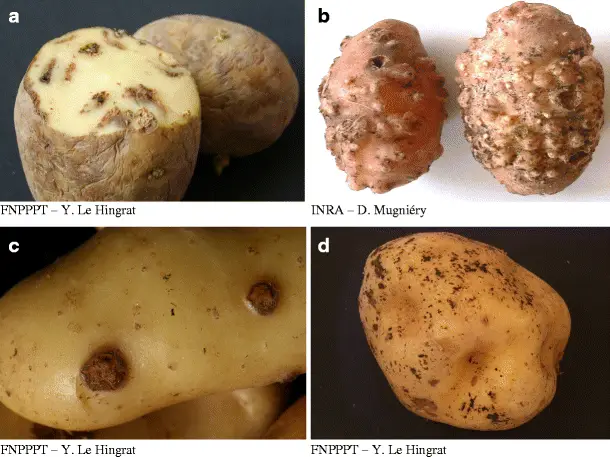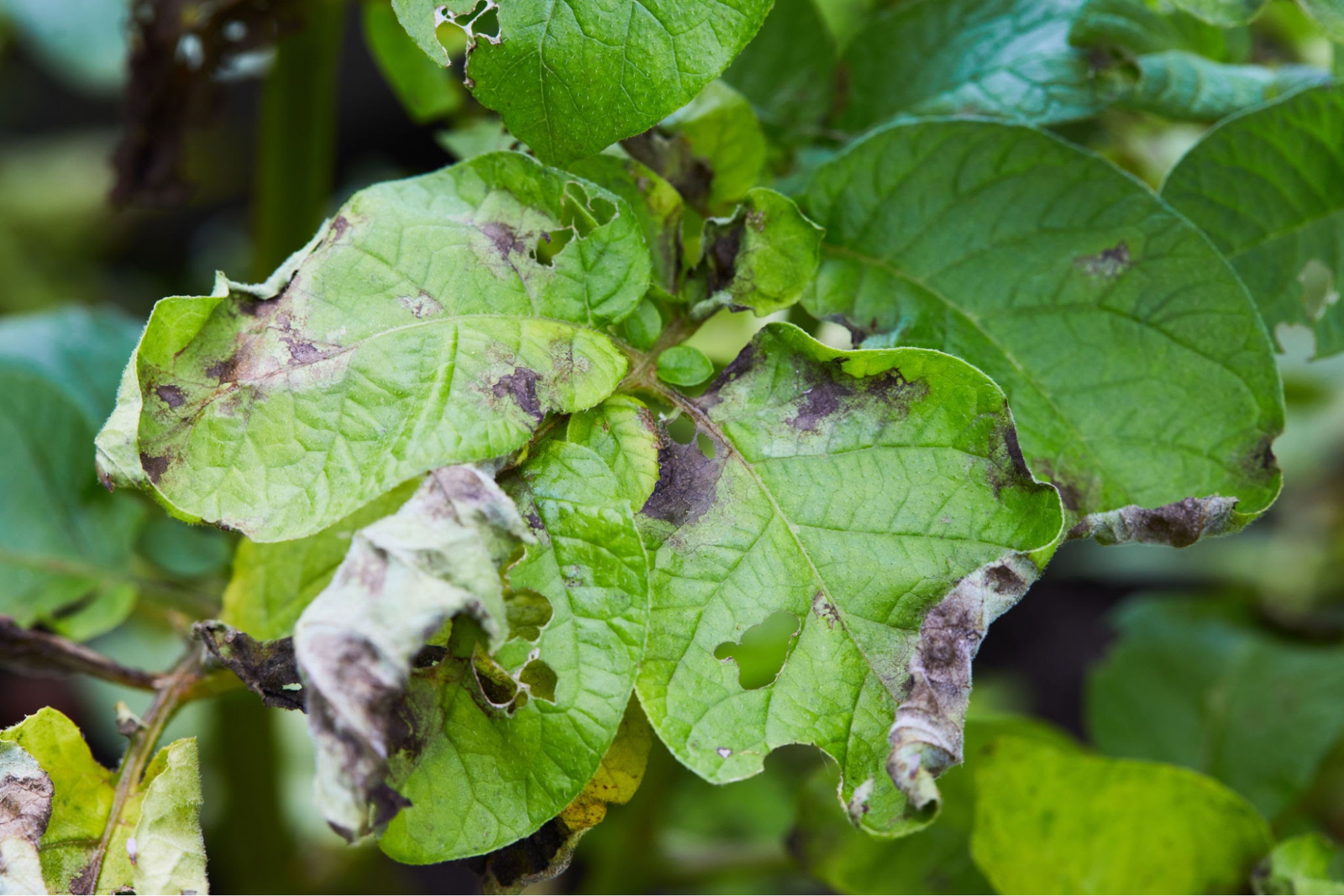Molds are the primary indication of a bad vegetable that tells you when it is infected. And if you are going to plant moldy potatoes, there arise many questions automatically regarding the consequences of it.
So, Can You Plant Moldy Potatoes?
Well, it is not safe to plant moldy potatoes but you can. People have planted moldy potatoes before but there is a high risk of the other potatoes getting infected with the molds. Molds can also lead to many other diseases as well and this can be alarming to human health.
If your curious mind wants to explore more then the following article is for you. Just give this interesting article a read.
Can You Plant Moldy Potatoes?
Yes, you can plant moldy potatoes in your garden but that is a highly unsafe decision. There is a high chance of spreading the molds among all the potatoes. Other than the molds, it can spread other diseases like curling leaves as well and might ruin the entire garden.

Why you should not grow Moldy Potatoes?
Here are the reasons why you shouldn’t grow moldy potatoes-
Harmful:
A mold is basically a form of decay that indicates the presence of harmful fungi or bacteria in it. So, there is not only the chance of these harmful substances getting spread but also it will hamper the regular growth of potatoes
If there are any other plants co-existing in the soil, it may affect that as well.
Poor Germination:
A moldy potato is prone to weak and infected germination. So it will also affect the next batch of potatoes as well. Though some people find it fine to plant moldy potatoes, as in some cases it doesn’t create any problems. But the risk of infection spreading is very high.
Molds can also attract other insects like ants to destroy your vegetable and fruits before growing properly.
Spread Disease:
Eating moldy or rotten potato may also hamper your health. You would feel nausious. Other than that, food poisioning, upset stomach, or diarrhea can also take place for eating moldy potatoes. For some people, it can also cause severe allergic reactions in the body.
How to Remove Molds From Potatoes and Potato Preserving Guide
Potatoes catch mold due to dampness and humid weather condition and that is why the storing atmosphere is very important for potatoes. Other than that, if they are not properly stored, they can easily go bad.
These are the few steps following which you can easily remove molds and it’s further affecting-
Step 1: Removing Molds
First of all, observe your potatoes carefully to detect the molds from them. If you find any moldy areas, use a sharp knife to deduct the moldy part of it carefully. Make sure, you cut at least 1 inches area of the potato outside the mold.
Step 2: Rinsing
Now it’s time to rinse the potatoes well under runny water. Rinse the potatoes well one by one so that there is no presence of molds or residue in them. Make sure you toss the potatoes really well under runny water.
Step 3: Drying
Drying is an easier yet very crucial step in storing potatoes. You can use fabric towels as well as paper towels to dry the potatoes properly. Keep in mind, there should be no moisture in your potatoes.
Step 4: Storing
Before storing the potatoes you should pick the storage place very carefully. The place where you would store your potatoes has to be dry, airy, and full of light but not direct sunlight. There should be enough ventilation in the place.
A basement or pantry which is damp is not a good place for storing potatoes.
Step 5: Rechecking
After storing them you can’t leave them unchecked for days. You have to keep your eyes on them and check for any mold or fungal effects carefully.
This video might help you to detect bad potatoes easily:
Disease of Potatoes
As potatoes grow under your garden ground, they are more prone to get diseases. Potatoes can get diseases from anything and everything. Like every other plant, there are some common diseases of potatoes as well.
These are the few diseases that potatoes are mostly affected with-
Leafroll Virus:
By the name of the disease, you can already guess the problem. When your potato plan is affected by the leafroll virus, you will notice curving on the edge of the leaf. The pale leaves and rolled-up edges are a clear indication of this disease.
Leafroll virus transfers from seed potato to new potato through aphids. To make a new plant out of a potato, we use the tubes of potatoes. And tubes are more prone to catch this leafroll virus. The risk of tubes getting affected by this increases due to moisture or low temperature.
If your potato plant is affected by the leafroll virus, the chance of having any harvest from it is very low.
Virus Y:
Virus Y is a hidden kind of virus and that is why you can hardly tell if your seed is infected or not. So to identify virus Y, you have to look for any fungal effect, discoloration, or mold in plants. Potato virus Y is mostly spread by aphids.
This virus is quite dangerous to plants and in most cases, plants end up dying from this. If by any chance, your seed potato is affected by this, the next season of the potatoes will be affected too.
Late Blight:
One of the most commonly known diseases of potatoes is the late blight disease. Seed potatoes are prone to catch this virus the most if they are not planted in time. Late blight is a fungal disease that can spread through spores.

The most alarming thing about this disease is, it can be spread through air. It will ultimately end up destroying the leaves of the potato plants.
Bonus: putting too many pesticides on the plants might help you to get rid of the disease. But you might end up with vegetables that taste like chemicals.
Frequently Asked Questions (FAQs):
Are white molds of potatoes bad?
White mold or any other mold that is growing on the potatoes is not good. They are not even safe for eating. If you are thinking of cutting the moldy part before eating then you are making a mistake. So it is better to get rid of the entire potato.
What is the white fuzz of potatoes?
White fuzz is a type of white mold of potatoes. This fungus arose from the fungus Sclerotinia sclerotiorum. There is a wide range of hosts for this particular fungus. It produces mycelium which looks fluffy and white in color. Sometimes they may appear in dark or black color as well.
How to use rotten potatoes?
It is best to throw away the rotten potatoes or use them as compost other than eating them. Some of us might agree that you can use potatoes by deducting the rotten part of them. But there is a chance of spreading disease from those.
Final Words
We have tried to answer all your questions here. Hope the article Can You Plant Moldy Potatoes, was useful to you.
One last tip for you, make sure you prepare your soil with compost and organic components well before planting.
That is it for now. Hope to see you soon.
Have a good day!
- Why Are There Still No Tomatoes in My Tomato Plants? Let’s Fix the Issue! - July 13, 2023
- Water Propagation White Stuff on Roots: Everything You Should Know! - July 11, 2023
- String of Dolphins Drying Up: Solved! - July 11, 2023
